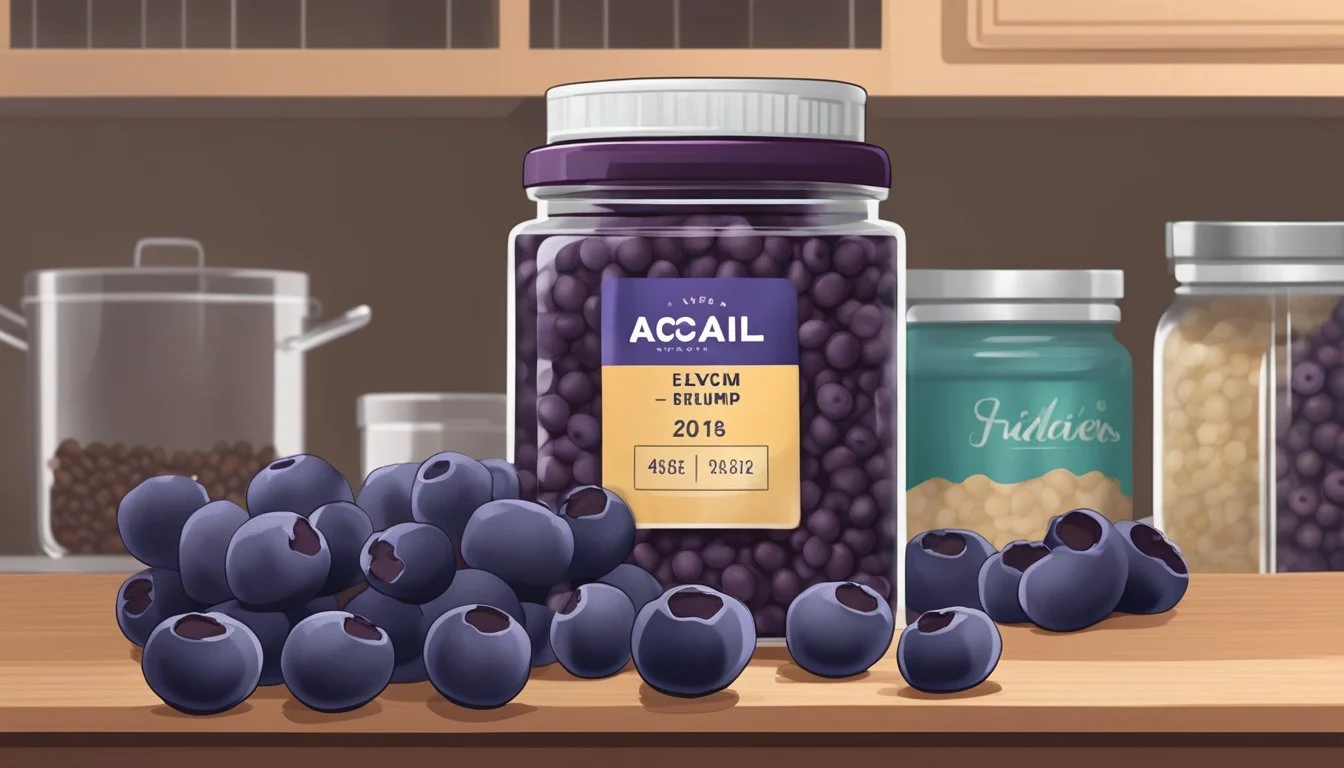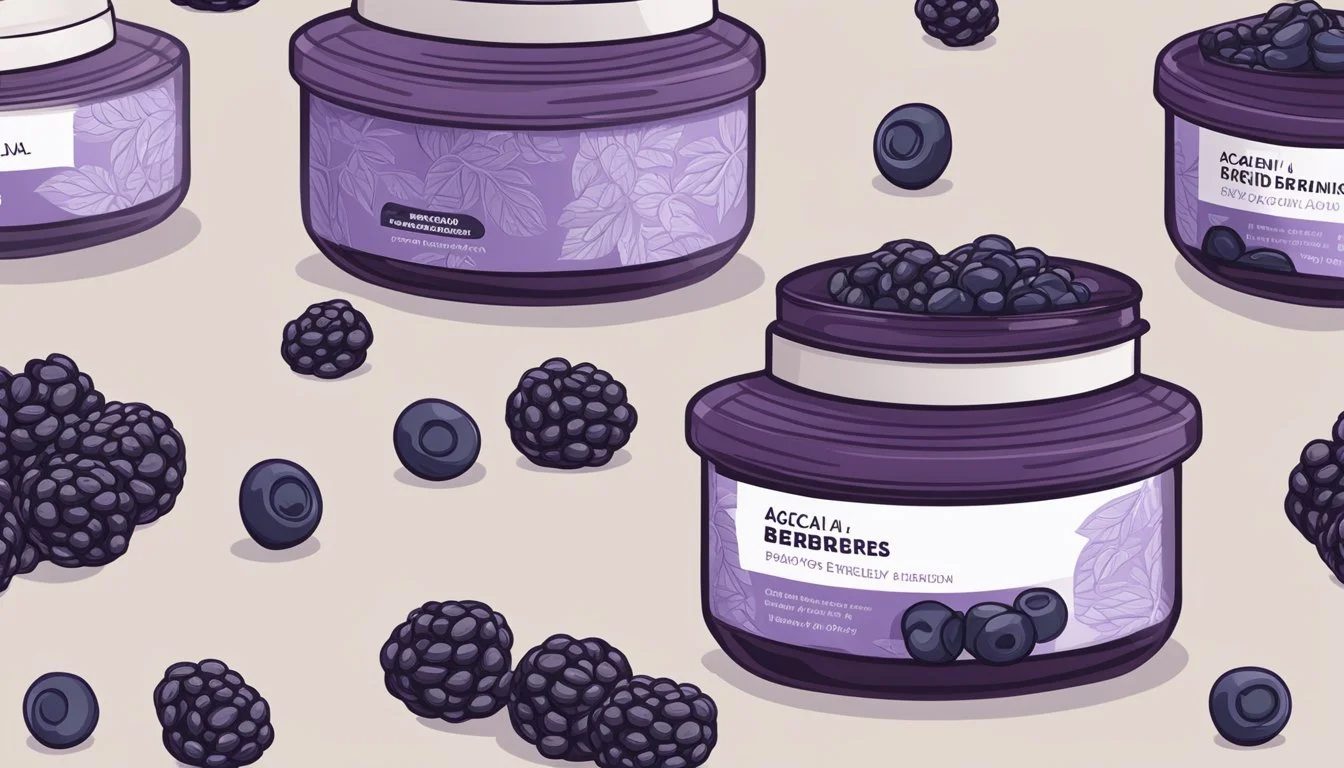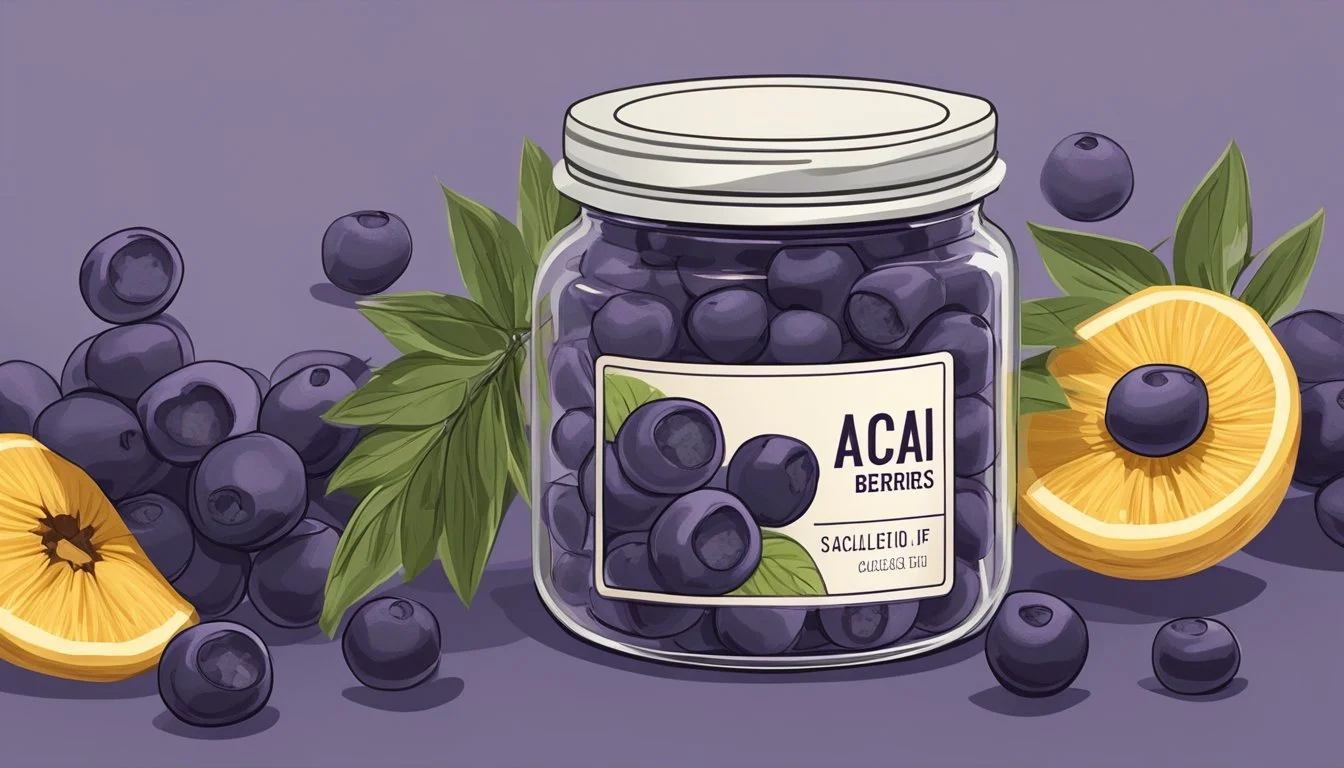How Long Do Dried Acai Berries Last?
Unveiling Shelf Life Secrets
Acai berries, harvested from the acai palm found in the Amazon, have surged in popularity due to their high nutritional content and associated health benefits. When fresh, these berries are highly perishable, prompting many consumers and manufacturers to opt for dried acai berries (how long do dried acai berries last?) or acai powder as a more stable alternative. The drying process helps preserve the antioxidants and polyphenolic compounds found in acai, which are suggested to contribute to brain health and may reduce inflammation, factors that are beneficial in managing conditions like Alzheimer's, Parkinson’s disease, and possibly bipolar disorder.
The longevity of dried acai berries is influenced by their storage conditions. Preserved correctly, the dried berries retain their nutritional profile, which includes dietary fiber, calcium, iron, and vitamin E, for a considerable period. This makes them a convenient and beneficial addition to various diets. Ensuring that these berries are stored in a cool, dark environment away from moisture can maximize their shelf life, preventing the loss of moisture and the risk of mold formation.
In the dried form, acai berries offer a versatile usage; they can be soaked in water for consumption or integrated into recipes, ranging from smoothies to health bars. The convenience of dried acai powder also allows for easy incorporation into daily diets, enabling consumers to reap the benefits of this nutrient-dense fruit without the concern of rapid spoilage. However, while freeze-drying acai berries into powder form is effective for longevity, it is essential to acknowledge that some nutritional degradation may occur during the process.
Overview of Acai Berries
Acai berries are a nutritional powerhouse with deep roots in the Amazon. They are renowned for their antioxidant content and potential health benefits, particularly pertaining to heart health and inflammation.
Origins and Cultivation
The acai berry (Euterpe oleracea) is native to Central and South America, thriving mainly in the Brazilian Amazon. Harvested from the acai palm, these berries have been an integral part of the local diet for centuries due to their availability and nutritional properties.
Nutritional Profile
Rich in nutrients, acai berries are noted for their high antioxidant levels, especially anthocyanins and proanthocyanidins. They contain essential amino acids, fiber, as well as an array of vitamins and minerals, including vitamin A, calcium, and phytonutrients.
Fiber: Beneficial for digestive health
Antioxidants: Combat oxidative stress
Vitamins & Minerals: Support overall body functions
Health Benefits and Claims
Acai berries have been linked to a number of potential health benefits. Their anti-inflammatory effects may contribute to improved heart health by aiding in the reduction of cholesterol levels. Additionally, the phytochemicals in acai may play a role in reducing inflammation and the risk of cancer, although more research is needed in this area.
Heart Health: May help lower bad cholesterol
Inflammation: Contains anti-inflammatory properties
Cancer: Research on cancer prevention is ongoing
Shelf Life of Dried Acai Berries
Dried acai berries offer a convenient way to enjoy this nutritious fruit, with their shelf life significantly extended when compared to fresh acai. Understanding storage and spoilage indicators ensures maximum preservation.
Proper Storage Conditions
Proper storage is crucial for maintaining the quality of dried acai berries. They should be kept in a cool, dry environment, ideally in the pantry, to achieve a shelf life of up to six months. After opening:
Seal the berries tightly.
Place them in a refrigerator to extend their quality for up to six additional months.
Alternatively, store in a freezer for extended preservation.
Signs of Spoilage
One should inspect dried acai berries for these spoilage indicators:
Unusual odor: A sour or off smell is a clear sign of spoilage.
Discoloration: Any noticeable change in color could indicate deterioration.
Texture changes: Dried acai berries should be chewy, not slimy or overly hard.
Extending Shelf Life
To maximize the shelf life of dried acai berries:
Freeze them in an airtight container; this can keep the dried powder safe for usage well beyond the pantry shelf life.
Avoid exposure to water and humidity to prevent spoilage.
Never refreeze thawed acai, as this increases the risk of bacterial growth and spoilage.
Usage and Consumption
A proper understanding of the ways to incorporate dried acai berries into diets, the variety of popular acai products available, and the right approach to preparation and recipes will enrich any diet with this nutritious superfood.
Incorporating into Diets
Dried acai berries are versatile and can easily be integrated into a variety of diets. They are a rich source of antioxidants, similar to blueberries (how long do blueberries last?) but with a unique profile that includes polyphenols and flavonoids. To optimize nutrition, they can be added to smoothies, sprinkled over granola, or paired with slices of banana and other fresh fruit. For those seeking a health boost, incorporating acai into daily food intake can be beneficial.
Smoothies: Blend dried acai berries with milk, yogurt, or a milk alternative, adding banana, raspberries, and blackberries (how long do blackberries last?) for natural sweetness and extra nutrients.
Granola: Mix into homemade granola for a crunchy, nutritious topping for yogurt or acai bowls.
Popular Acai Products
A variety of acai products are on the market, catering to different dietary needs and personal tastes. For consumers interested in convenience or shelf-stable options, acai powder is widely used in making acai bowls and smoothies.
Acai Bowls: Toppings might include chia seeds (how long do chia seeds last?), coconut flakes (how long do coconut flakes last?), nut butter, and a selection of chocolate pieces.
Juices and Teas: Acai-infused juices and tea blends are popular for those who prefer beverages over solid food supplements or snacks.
Preparation and Recipes
When preparing dried acai berries or acai powder, ensuring maximum flavor and nutrition is key. Rehydrating the dried berries by soaking them in water can make them palatable. Additionally, acai powder can be a convenient alternative for long-term storage and ease of use.
Acai Bowl Recipe: Blend rehydrated acai berries or acai powder with a liquid base such as juice or milk, then pour the thick blend into a bowl and add toppings like granola, fresh fruit, and a drizzle of honey or agave.
Acai Tea Recipe: Steep acai powder with hot water and your choice of sweetener to create a warm, antioxidant-rich tea.
Health Considerations
When incorporating dried acai berries into the diet, it is essential to consider both their potential health risks and dietary recommendations. These considerations help ensure that individuals can enjoy the benefits of acai while being mindful of any adverse effects.
Potential Health Risks
Dried acai berries are rich in nutrition, but like any food, they can pose health risks if consumed improperly or in excessive amounts. Allergies to acai or similar berries may lead to adverse reactions. Overconsumption could lead to excessive intake of fiber, potentially causing digestive issues. It's also important to consider the sugar content in dried acai products, which could impact blood sugar levels, particularly for those with diabetes.
Interactions with medications may be another concern. Acai can affect cholesterol-lowering drugs due to its plant sterols content. These compounds, such as campesterol, are structurally similar to cholesterol and might interfere with the medication's effectiveness. Individuals on treatment for cardiovascular diseases should consult healthcare providers before introducing acai berries into their diet.
Dietary Recommendations
Integrating dried acai berries into a balanced diet can contribute to heart health by helping manage LDL cholesterol levels and reducing oxidative stress, which has been linked with cardiovascular disease. They contain anthocyanins, which are found to have anti-inflammatory effects that may benefit those with heart disease.
Incorporating acai berries in moderation can also provide nutrition such as vitamin C, trace minerals, and fiber, supporting overall health benefits. The National Center for Complementary and Integrative Health (NCCIH) highlights that while acai is often marketed for weight loss, there is limited scientific evidence to support these claims. It's recommended to consume acai as part of a varied and balanced diet, rich in fruits and vegetables, that meets established dietary guidelines for cardiovascular health and diabetes management.
Comparative Analysis
When examining the lifespan of dried acai berries, it’s essential to consider how they stack up against other types of berries in terms of longevity, nutritional value, and economic factors.
Comparison to Other Berries
Dried acai berries can last 1-2 years when stored in a cool, dark, and dry place, which is comparable to other dried berries such as blueberries, raspberries, and cranberries. This extended shelf life can be attributed to the natural preservation process and high antioxidant content, specifically anthocyanins, which protect the berries from oxidative damage. Compared to other berries, acai is often recognized as a superfood because of its dense nutrition profile and health benefits.
Blueberries: Known for their antioxidant properties, particularly vitamin C and anthocyanins. They tend to last 6 months to a year when dried.
Cranberries: Often sweetened, which may affect their longevity, but typically can last for 6 months to 1 year.
Raspberries and blackberries: Delicate in nature; when dried, they have a similar shelf life to blueberries.
Strawberries: Less common in dried form, but can last up to 6 months.
Acai vs Other Berries:
Antioxidants: Acai berries have a higher antioxidant content than blueberries and strawberries.
Anthocyanins: Similar to blackberries and blueberries, acai berries are rich in these compounds that contribute to their long-lasting quality.
Market Availability and Cost
The market availability and cost of dried acai berries differ significantly from other dried berries. As a niche product often marketed as a superfood, dried acai berries are typically more expensive and less available than their counterparts such as blueberries or strawberries. Market trends reflect an increasing demand for acai, partly due to its health benefits.
Cost Comparison:
Dried acai berries are often sold at a premium price, sometimes two to three times the cost of more common dried berries like blueberries.
Market Availability: Specialty health food stores and online retailers are the primary sources for dried acai berries, while other dried berries are readily available in most supermarkets.
Market Trends:
The demand for acai has been increasing globally, influenced by its nutritional profile and the popularity of healthy lifestyles.
Acai berry products, despite their cost, remain popular for their nutrient-rich composition and are considered a worthwhile investment by health-conscious consumers.
Sustainability and Ethical Considerations
When considering the longevity of dried acai berries, it is important to factor in the sustainability of their production and ethical considerations of their sourcing.
Environmental Impact
The production of acai berries in the Amazon region has both positive and negative implications for the environment. On one hand, sustainable farming practices can help preserve the rainforest, as the acai palm can thrive in a biodiverse setting without the need for deforestation. In contrast, unsustainable practices may lead to environmental degradation, including soil erosion and habitat loss.
Sustainable Methods: Encouragement of agroforestry and organic certifications.
Waste Management: Addressing the issue of residue, such as acai pits, to prevent waste accumulation.
Social and Economic Impact
The harvesting and sale of acai berries have significant social and economic impacts on local Brazilian communities. Ethical sourcing is crucial as it ensures fair labor practices and helps improve the livelihoods of local workers.
Fair Trade: Supporting fair compensation and working conditions.
Economic Growth: Generating income in the Amazon region through ethical trade can foster community development and provide economic stability.
Future Outlook
The future of dried acai berries appears poised for growth, driven by robust research trends and evolving consumer demands. These factors contribute to the continued relevance and potential increase in market presence for acai berries.
Research Trends
Research into the nutritional value and health benefits of acai berries maintains a strong upward trajectory. Scientists are particularly interested in the high antioxidant content of acai, as antioxidants are critical for combating oxidative stress and supporting overall health. The exploration into various acai supplements continues with a focus on bioavailability and efficacy. As such, emerging studies are likely to highlight the benefits of incorporating dried acai berries into diets and potential new uses in nutraceutical formulations.
Consumer Demand
With health and nutrition awareness on the rise, consumers are displaying a marked preference for organic and plant-based products. Acai berries satisfy this trend, leading to an increased inclusion in households as both a food ingredient and a health supplement. Current market trends show that the demand for dried acai berries is expected to grow, influenced by their convenience and long shelf life. This aligns with broader consumer behavior which leans toward nutrient-rich and convenient health foods. Future demand is likely to be shaped by these preferences as well as the innovative use of acai in new product offerings.









